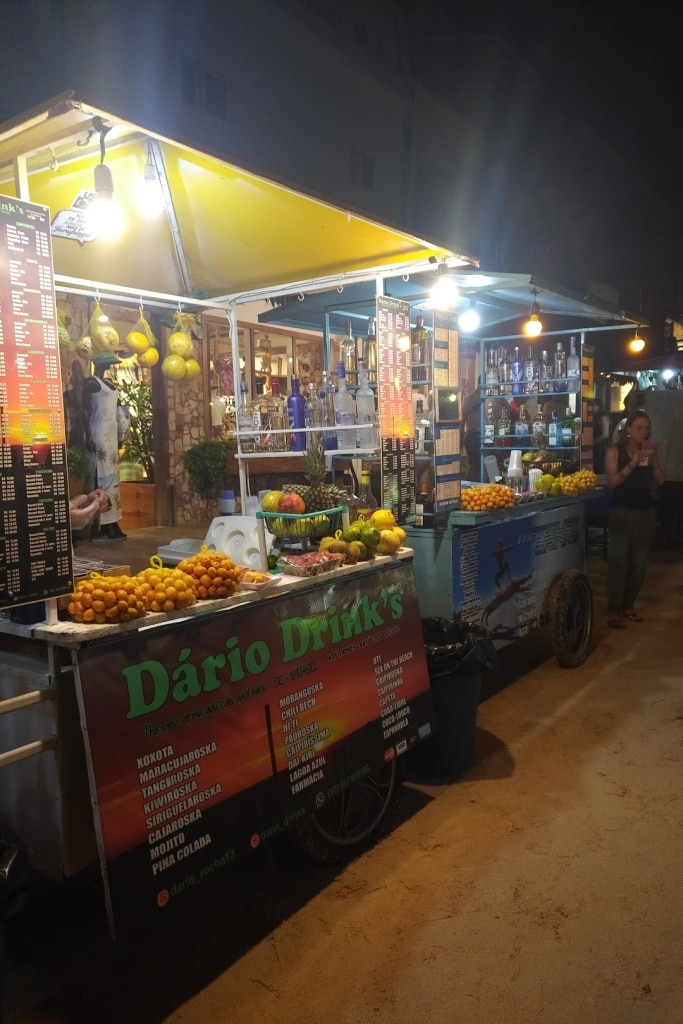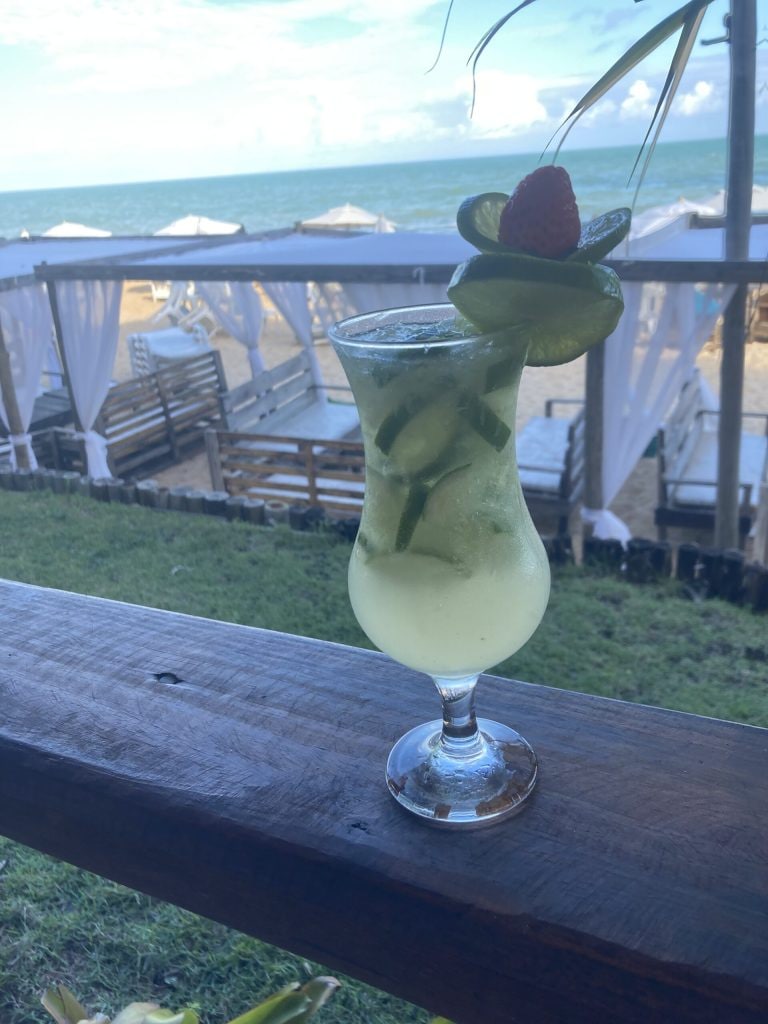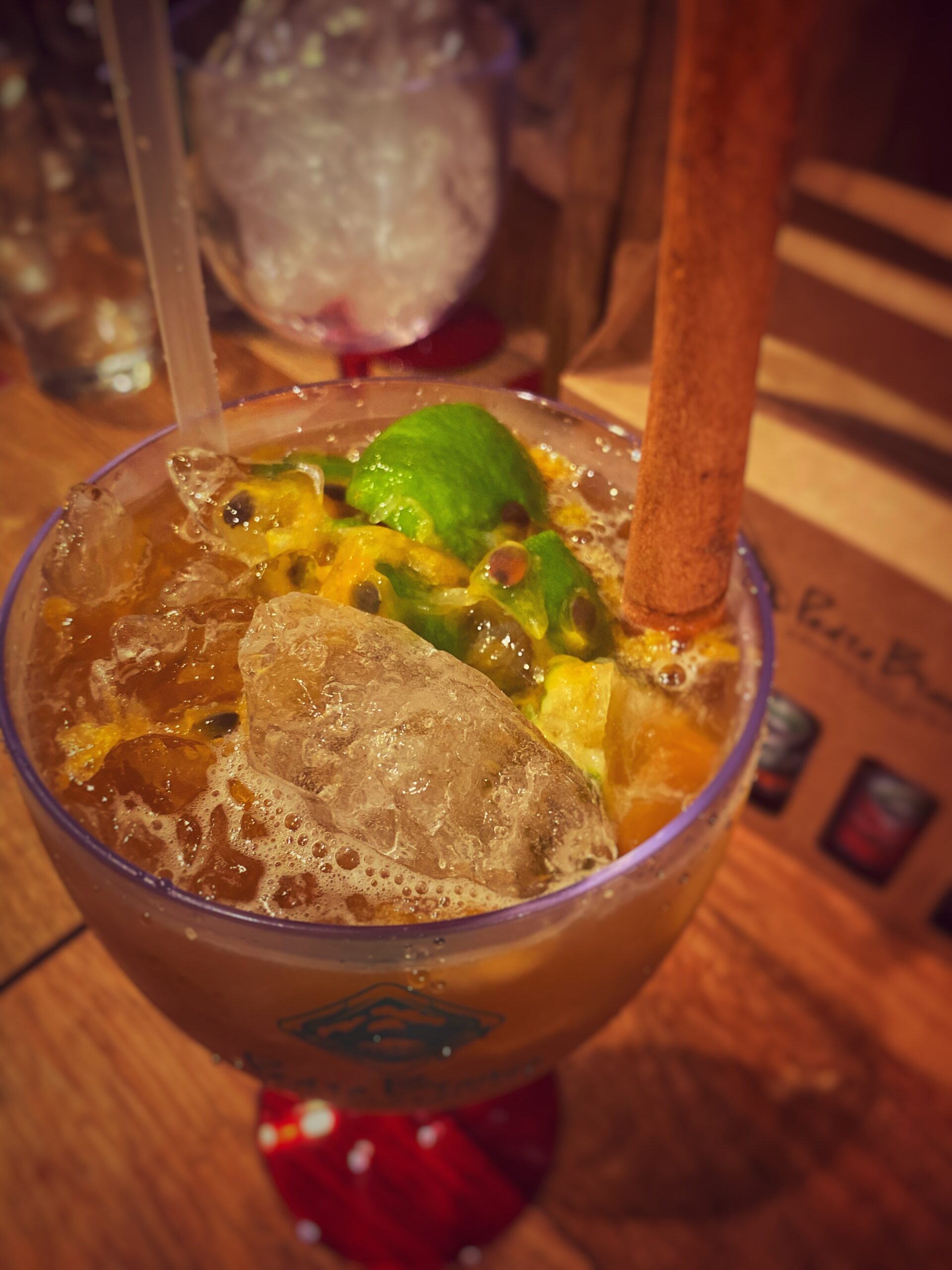During a journey, there are many aspects you can learn about the country you are visiting, and you can do so in many different ways. This blog, as you know, tells the stories of journeys through their flavors, but flavors are not just related to food, but also to drinks. Many countries are what they drink. Try to think, for example, of Cuba. What comes to mind besides its golden beaches and its controversial history? Mojito! And if you think of Mexico? It’s Margarita.
If you think of Brazil??? It’s Caipirinha. Tà!
So in this new module of recipes called “Cocktails and liquors“, I will tell the customs of a country through what its people drink.
And I could only start with the quintessential Brazilian cocktail: the Caipirinha.
During my two months in Jericoacoara, even though I’m not a big drinker, I tasted several Caipirinhas.
– Stronger? The one at Boteco Jericoacoara, actually a Caipifruta (a variant of the classic Caipirinha to which fruit or similar is added), in this case gengibre (ginger) and hortela (mint).
– The most original? The one tasted at the stalls that enliven the end of rua Principal at sunset: Caipifruta com siringuela.
– The best? The classic one drunk during the night spent in São Paulo, at the Hampton By Hilton Guarulhos hotel.
On my trip to Paraty, I discovered Jorge Amado, a variant of the classic Caipirinha with the Caipirinha Gabriela Cravo e Canela, lime, and passion fruit juice.
Here you can find the “classic” recipe.
In Brazil, they shake it directly in the glass (with a Boston Shaker), thus breaking the ice; in the rest of the world, they crush the ice first and mix everything in the glass.
Please note…. use white sugar and NOT cane sugar!
Main ingredient: cachaça, a sugarcane spirit, which Brazilians also drink pure (a bit like grappa in Italy).
The Caipirinha was featured in “ViaggiandoMangiando on air: Saudade” on March 17, 2022, you can find the video HERE.

- Difficulty: Medium
- Cost: Medium
- Preparation time: 5 Minutes
- Cooking time: 1 Minute
- Portions: 1 person
- Cuisine: Brazilian
Ingredients
If you want to try the Brazilian shaken version using the Boston Shaker, you can put all the ingredients in the glass (whole ice) and then shake vigorously.
- 1.7 oz Cachaça
- 1 1/2 Lime
- 3 teaspoons White sugar
- Ice
Tools
- 1 Muddler
- 1 Glass highball or old fashioned
- 2 Short straws
- 1 Spoon Mixing spoon
Preparation
Cut the lime in half and then into 4 equal pieces; place them in the glass.
Add the sugar and with the muddler apply slight pressure on the lime pulp; it is useful to perform rotary movements to release the juice, being careful not to squeeze the bitter peel too much.

Add the crushed ice cubes and finally the cachaça.
Mix the ingredients with the mixing spoon.

As a garnish, add a thin slice of lime by placing it on the rim of the glass.
Serve the caipirinha with two short straws.

The one with a sea view at Cabana Area Beach in Porto Seguro on Taperapua beach.

JORGE AMADO:
1 lime
Pulp of 1/2 passion fruit
1 teaspoon of sugar
1.7 oz of Gabriela cachaça
1.7 oz of Bianca cachaça
Ice to your liking
Method of preparation:
Cut the lime, add it to a shaker, add the sugar and passion fruit pulp.
With the help of a muddler, crush well as if making a caipirinha.
Add the cachaça and ice and shake.
Mix well and serve in a caipirinha glass.
Due to the passion fruit seeds, you can strain the drink if you prefer and you can decorate with a cinnamon stick.
Why is it called Caipirinha?
Its name derives from the diminutive of the Brazilian word caipira, which is used to designate the inhabitants of rural and remote areas of the state.
If life gives you a lemon, make it a caipirinha
“If life gives you a lemon, make it a caipirinha”
(Brazilian proverb)
Why is it called Jorge Amado?
Why is it called Jorge Amado?
Jorge Amado was a renowned Brazilian writer, perhaps the most famous Brazilian writer, born in 1912 in the city of Itabuna, Bahia. Throughout his literary career, Amado was known for depicting the culture and reality of the Brazilian people, particularly the people of the Northeast, in his works. His writing was characterized by a richness of characters, engaging dialogues and a regionalist language, which immersed readers in the universe portrayed in his pages.
Among his most famous works are Gabriela, Clove and Cinnamon, Dona Flor and Her Two Husbands and Tent of Miracles. Amado was a great advocate of social and political rights, being a member of the Brazilian Communist Party and facing persecution during the military dictatorship. His literary work, in addition to receiving national and international acclaim, also served as a tool for social denunciation and contributed to the appreciation of Brazilian culture. Jorge Amado died in 2001, leaving an important literary legacy for Brazilian and world literature.
To thank Sônia Braga, the actress who played the role of Gabriela both in film and on TV, and the entire recording team for the soap opera based on Jorge Amado’s work “Gabriela, Clove and Cinnamon,” shot for a season in Paraty, (TV Globo in 1975, in which Sônia Braga played the role of Gabriela) the city’s producers created the Paratiana drink: Gabriela, a delightful mix of white cachaça, cloves, cinnamon, and ginger (not always present).
“Cachaça Gabriela, Clove and Cinnamon” is a typical and traditional drink from the region of Paraty, located in the state of Rio de Janeiro, Brazil. It is known for its unique and aromatic flavor, resulting from the addition of cloves and cinnamon during the production process. The creation of this brandy was inspired by the character of Gabriela, from the famous Brazilian writer Jorge Amado, who is portrayed as a seductive and charming woman. Therefore, the drink was named in her honor, offering a sensory experience that connects to the literature and local culture.
But the tributes did not stop there. The drink inspired the creation of the Jorge Amado cocktail, which contains passion fruit, sugar, lemon, and Gabriela.
The cocktail was an invention of Camila Paiva, a bartender from Paraty. In 2014, the drink became the city’s official cocktail when the bartender won the Paraty Cachaça Cocktail Championship, held in collaboration with the Association of Producers and Friends of Cachaça de Paraty (Apacap), consecrating the success of the recipe with its current name.
The cocktail was an invention of Camila Paiva, a bartender from Paraty. In 2014, the drink became the city’s official cocktail when the bartender won the Paraty Cachaça Cocktail Championship, held in collaboration with the Association of Producers and Friends of Cachaça de Paraty (Apacap), consecrating the success of the recipe with its current name.

